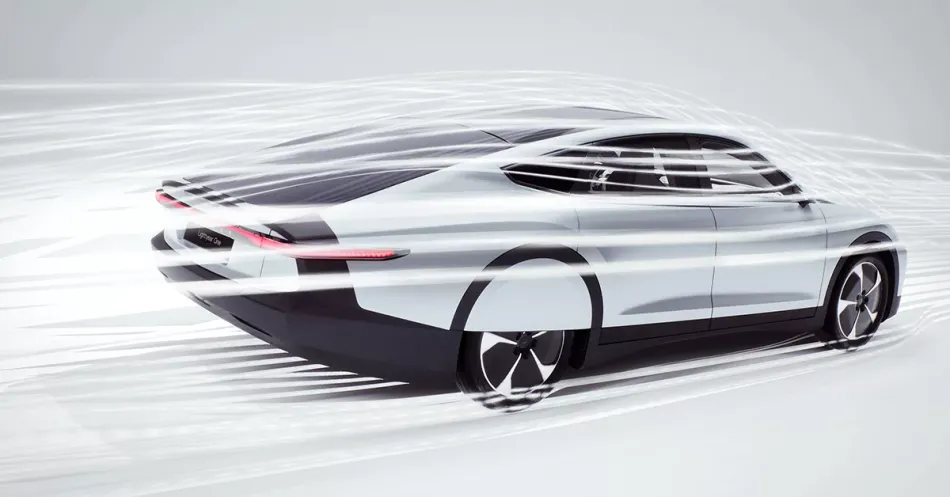The role of simulation in decarbonizing transportation
Our recent series explored how simulation is enabling engineers to innovate at an exponential pace.
Together with Ansys, a developer of simulation software, we have created a series of content about the technologies that make sustainable transportation possible. This article provides a summary of the series with links to read more.
Introduction
Without simulation, we would not be at the current status of eclectic and autonomous cars. Simulation is a key part of the major technologies that can help to lower the environmental footprint of transport. Among these are:
- Battery technology
- 3D Printing to reduce weight and carbon footprint of electric vehicles
- Digital Twins
Further, it explores ways to increase the efficiency of internal combustion engineer vehicles until they phase out through the use of synthetic fuels and camless engine technology.
Simulation plays a critical role in each of these steps towards decarbonization. Using simulations has been shown to reduce the development time required to bring a car to market by 50%. It is also linked to a 12% improvement in energy efficiency and power density, boosting the environmental impact of electric vehicles. For example, simulation is a useful tool for developing the electric systems and power train in electric vehicles. It can help increase the power density and lifetime of power electronics while optimizing the electrochemistry of the battery and ensuring the safety of the system.

Competition drives innovation
The Indy Autonomous Challenge was a year-long event that saw university teams compete against each other to develop the best autonomous driving system. The challenge finished with a high-speed race at the Indianapolis Motor Speedway (IMS) with teams vying for 1 million dollars in prize money. The challenger provided a really important method for emerging engineers to develop technology outside of the corporate structure, experiment, share knowledge and ultimately make a significant contribution to the future of autonomous vehicles.
The winner of the historic race was TUM Autonomous Motorsport from the Technische Universität München (TUM). The IAC race required each team to compete in a fastest lap competition that included an obstacle avoidance component. The winning team recorded the fastest 2-lap average speed of 135.944 on the famed IMS Oval.
The primary goal of the IAC was to advance technology that can speed the commercialization of fully autonomous vehicles and deployments of advanced driver-assistance systems (ADAS). These enhancements will lead to increased safety and performance in motorsports as well as all modes of commercial transportation.
“The IAC is a test bed for developing autonomous technology and the brain power that goes into it,” says Tarun Tejpal, Ansys’ industry marketing director for transportation. “An autonomous race car is basically a supercomputer on wheels. The teams have to optimize that supercomputer and the only way you can do that is with Ansys simulation technology.” He notes that the hardware and software have been coming together over the last decade to bring autonomous driving closer to reality. “Now it’s just a matter of human ingenuity,” he says. “By putting these student teams in a competitive situation, they will exponentially innovate the autonomous technology that will eventually be used in commercial automobiles.”
Essential for the teams to compete in the final event was participation in the Simulation Race. Here teams had to perform certain minimum requirements such as single la performance and the ability to overtake without crashing. The final was a 10-lap race won by PoliMove, who took home $100,000.
Cities and systems simulated to herald new era of automotive
As the way transportation changes so does the functionality and performance of cities and public spaces. By harnessing the Internet of Things (IoT) with the rapid connectivity of 5G (and beyond), cities are evolving to become smarter, cleaner, more efficient, and more habitable not just for humans but for future transportation too. Ensuring that emerging technologies such as alternative fuel cars work within the current envelope and limit of our cities presents immense challenges to architects, engineers, urban planners, and automakers.

These challenges can be met by using simulation software in the design and testing of various city features, from the number and placement of EV charging stations to the placement of 5G towers for maximum effect and aesthetic.
Simulating, testing, and iterating smart city solutions before implementation is key to a ‘smarter’ smart city future. Not only is simulation essential in a design and planning phase it can also be used through technologies such as digital twins to monitor and maintain systems in a predictive manner.
Summary
Reducing emissions and decarbonization will only be achieved through innovation. This innovation will come largely from the ability to test and design rapidly with exponential pace. Discover more about the role of simulation in cutting-edge technology at the Ansys profile.
About the sponsor: Ansys
Ansys provides engineering simulation software used to predict how product designs will behave in real-world environments. Founded in 1970, Ansys employs more than 4,400 professionals, many of whom are expert M.S. and Ph.D.-level engineers in finite element analysis, computational fluid dynamics, electronics, semiconductors, embedded software, and design optimization.


